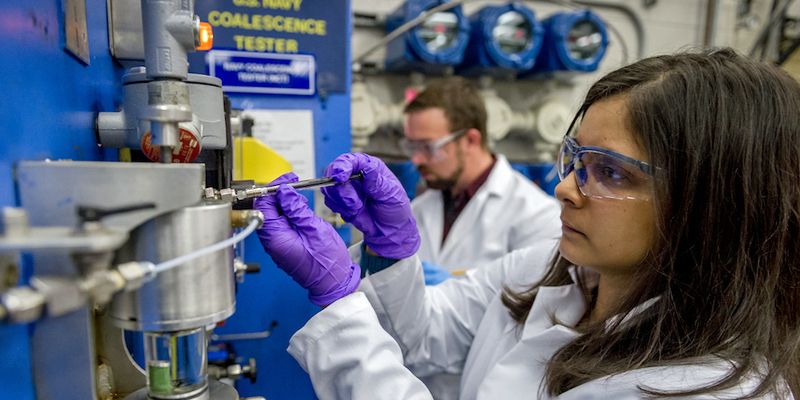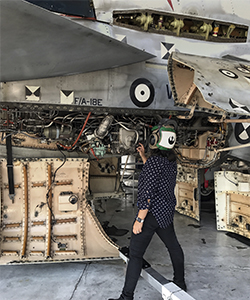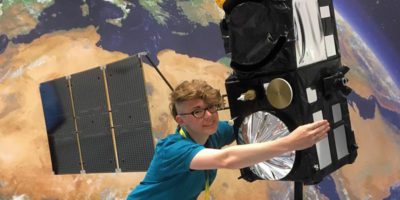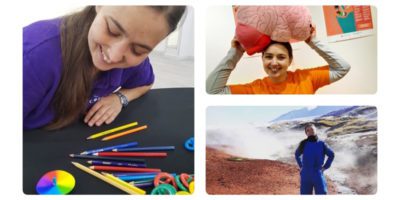Joan Melendez Misner is a mission integration systems engineer at NASA for its Launch Services Program, working on management of space and aeronautical flight systems for all non-crewed and scientific missions. Prior to this Joan worked for Blue Origin and the Naval Air Systems Command in the US. She works with Engineering Gals, a community of engineers advocating for STEM, and is a member of Passage, working with other science communicators to bring STEM education supplies to students in South America and the Caribbean.
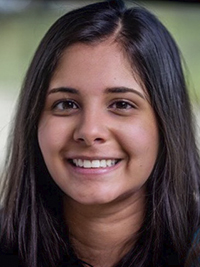
“DART is a planned space probe that will visit the double asteroid, Didymos and demonstrate the kinetic effects of crashing an impactor spacecraft into an asteroid moon for planetary defence purposes. I always think of the movie Armageddon, except this time we don’t have to send Bruce Willis and his team to blow up an asteroid that is threatening Earth.”
From chemistry to space
I am a native of Orlando, Florida, and I received a dual bachelor’s degree in chemical engineering and chemistry from the University of Maryland, and a master’s degree in systems engineering from the Naval Postgraduate School.
I now work for NASA, but prior to that, I worked for Blue Origin on the New Glenn rocket, and Naval Air Systems Command on jet engines, fuel systems, and biofuels research/qualification.
We have lift-off!
My day-to-day role changes depending on what part of the launch process I am in. Currently, I am working on four missions for NASA, which are the Double Asteroid Redirection Test (DART), Europa Clipper, GOES-U and the Interstellar Mapping and Acceleration Probe (IMAP).
DART is a planned space probe that will visit the double asteroid, Didymos and demonstrate the kinetic effects of crashing an impactor spacecraft into an asteroid moon for planetary defence purposes. I always think of the movie Armageddon, except this time we don’t have to send Bruce Willis and his team to blow up an asteroid that is threatening Earth.
DART is the first mission to launch out of the four, and it launches at the end of 2021.
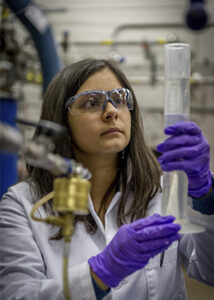
This leads up to launch day, where I am on console from 10 to 12 hours ensuring that not only the rocket launches, but that the Spacecraft is deployed from the adapter in the fairing, and it is on its way to its destination.
Being ‘on console’ means sitting on the mission control computer, monitoring my systems. I specifically monitor the Environmental Control Systems (ECS), which keep the Spacecraft hardware under temperature control. You can think of it as the A/C unit for the Spacecraft inside the fairing (the fairing is the top of the rocket that carries the payloads/spacecraft to space).
Launch campaigns are one of the most exciting parts of my job because it takes years of planning, writing requirements, test plans, meetings, etc. to lead up to the day of launch. Throughout the three to four years prior to launch, I work with both the launch vehicle provider (SpaceX, ULA, Blue Origin, etc.) and the spacecraft provider (Jet Propulsion Lab, etc.) to ensure that the requirements to launch the spacecraft are met. This includes flight design, electrical, mechanical, and several other disciplines that I work with to help guarantee the requirements for the launch are met.
My other projects
IMAP is a heliophysics mission. [Heliophysics is the science of the physical connections between the Sun and the solar system.] It will simultaneously investigate two important and coupled science topics in the heliosphere: the acceleration of energetic particles and the interaction of the solar wind with the local interstellar medium.
GOES-U is the US nation’s most advanced fleet of geostationary weather satellites and we work closely with NOAA [the US National Oceanic and Atmospheric Administration]. This will be the fourth variant to launch.
Europa Clipper is an interplanetary mission where a spacecraft is being developed to study the Galilean moon, Europa, through a series of flybys while in orbit around Jupiter. This one is one of my favourite missions because Jupiter is my favourite planet, and Europa is one of my favourite moons.
Two types of integration engineer roles
Integration engineers are placed on missions either as a prime engineer or a backup engineer. As the prime engineer, you are the lead integration engineer for the mission, and as a backup, you are secondary to the lead. The backup helps the lead engineer prepare for the mission and is involved heavily with the mission (help with testing, sitting ‘on console’, etc.).
Additionally, as an integration engineer, you wear several hats because we are a ‘jack of all trades’. We must know our mission inside and out, and that may include the electrical hardware, mechanical, flight design, flight trajectories, etc., in order to communicate to all parties, the status of the mission and to ensure the requirements are met.
Starting my new role at NASA during the COVID-19 pandemic
I started with NASA in August of 2020, during the pandemic. I have not been into the office or have met my coworkers in person. Typically, when you start a new role, you are given training about your role and shadowing opportunities to guarantee your success.
COVID has changed the way we bring people onboard and NASA has done a tremendous job in utilising Microsoft Teams and other online formats to train employees virtually. I feel like I have been given all the tools for success, and my coworkers have always been available if I ever have any questions.
Let’s humanise STEM roles
Currently, women make up between 28-33% of the STEM workforce, which includes the space sector.
STEM is still (to this day) a male-dominated field because of stereotypes and a lack of role models. In a 1983 study that asked elementary school students (boys and girls) to draw a scientist – 28 of the girls drew a female scientist and no boys drew a female scientist, out of almost 5,000 students. That is only 1.2% of this 1983 study drew women as scientists.
Since then, the study has been repeated around 90 times with a span of 20,000 students, and each time it was performed that percentage increased. The most recent study, performed in 2016, showed that 58% of the girls drew a female scientist, but the boys still drew a male scientist 9 out of 10 times.
Here is another example, when you think of your favourite scientist on TV, who do you think of? Bill Nye the Science Guy and Neil deGrasse Tyson are usually picked. Both are amazing scientists, but entertainment lacks female representation in these fields. I think for us to move forward, we have to see more women in STEM highlighted so young girls can have someone to look up to.
Emily Calendrelli from Emily’s Wonder Lab is a perfect example. She is breaking stereotypes by having a science-based TV show for kids on Netflix, and she filmed it while pregnant. This was an excellent way to not only showcase women in STEM fields, but to also show that you can have a family and still pursue your STEM goals.
Having more women as STEM role models and being able to openly discuss their struggles and successes will allow for the STEM profession to be humanised and not seem so daunting.
Why you need to network to get work
My advice for women interested in STEM: First one is going to sound a little cliché, but don’t give up. If working in STEM is your dream, don’t get discouraged if you fail a class, or if you have to study harder than everyone else. Keep on pushing towards finishing your degree and working hard to land your dream job.
The other piece of advice I would give is ‘network to get work’. I live my life thinking about this quote. I went to a NASA social, for the DEMO-1 launch in 2019. After touring NASA and talking to the NASA engineers, I knew it was my time to move over. I kept in contact with them, asked for advice, etc. They would send me upcoming job postings and give me resume help.
I truly believe that networking can help you get on the right path, which is another reason I am so open on social media. If you need resumé help, I got you. If you need someone to give career advice, I got you. A lot of people helped me along the way to help me get to where I am, so I definitely want to extend a helping hand to anyone who was in my position several years ago.
My goal and ambitions
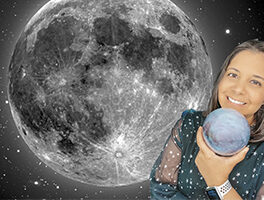
Additionally, I want to continue to grow my social media platforms (YourFemaleEngineer) in order to keep on inspiring the next generation to pursue careers in STEM, as well as trying to break down barriers to the STEM sector by humanising it.
https://www.linkedin.com/in/joan-melendez-misner/
https://yourfemaleengineer.com/
https://www.instagram.com/yourfemaleengineer/

